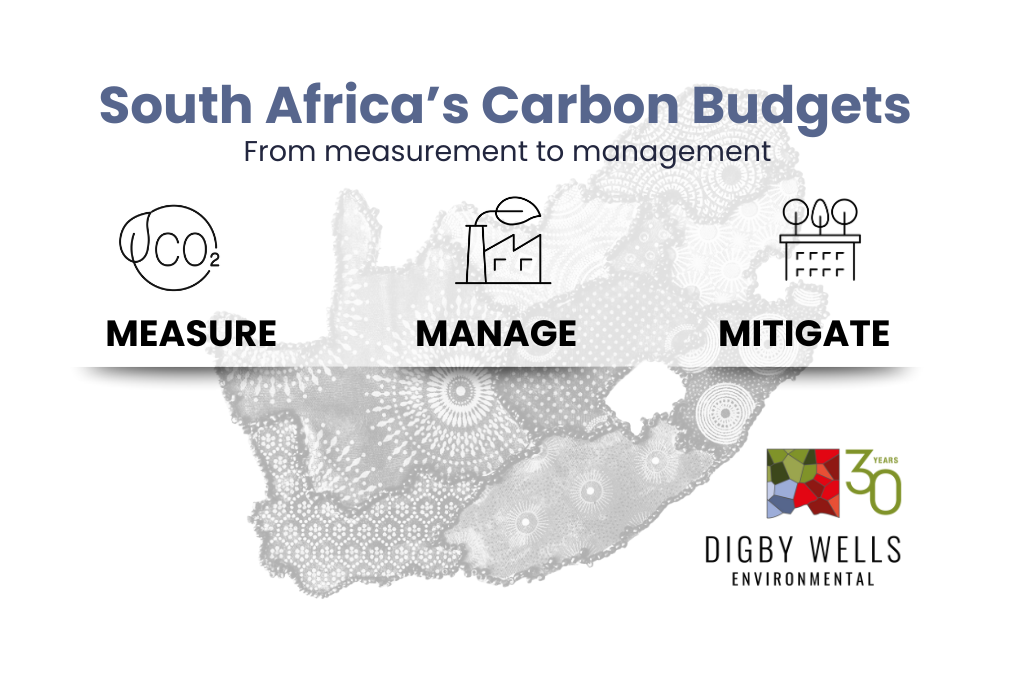South Africa’s Draft Carbon Budget Regulations mark a major step forward in climate policy, closing the loop between greenhouse gas (GHG) reporting, the Carbon Tax, and national net-zero commitments.
These draft regulations, published in 2024, move South Africa from measuring emissions to managing them, making carbon budgeting an integral part of corporate climate governance from 2026 onwards.
Who’s in Scope?
The listed activities covered by the draft regulations mirror those already listed in the GHG Reporting and Carbon Tax frameworks. The difference lies in the threshold.
While reporting and tax thresholds are based on a facility’s design capacity, the carbon budget threshold is based on an entity’s actual average GHG emissions over the last 3-5 years.
This means that any company emitting more than 30,000 tonnes of CO₂ equivalent (tCO₂e) of direct (Scope 1) emissions per year on average will need to register as a data provider and participate in the carbon budgeting system. The threshold applies at the company (legal entity) level rather than per installation.
Coverage
The regulations distinguish between mandatory and voluntary emissions sources. . Currently, mandatory GHG emission sources include:
- Stationary combustion
- Civil aviation
- Domestic Navigation
- Fugitive Emissions
- Industrial Process and Product Use
Voluntary sources include Scope 2 and Scope 3 emissions, as well as certain Scope 1 categories such as road transport and waste, which be incorporated into later phases.
The tiered approach allows government to progressively expand the system while focusing early compliance efforts on the largest and most material emission sources.
Timelines & Compliance Cycle
The carbon budgeting programme is designed around three five-year periods:
- 2026–2030
- 2031–2035
- 2036–2040
A company’s carbon budget will be set the year before each period begins, using verified emissions data from the preceding 3–5 years.
Each year, participating entities must submit Annual Progress Reports (APRs) aligned to the national GHG reporting schedule. At least three APRs per period will need independent validation and verification.
Companies must also report on the implementation and progress of their mitigation plans, outlining how planned measures are contributing to emission reductions. These can be integrated into the APR submission to streamline compliance.
Tax Implications
The relationship between carbon budgets and the Carbon Tax Act is particularly important.
All emissions under the carbon budget remain taxable under the Carbon Tax Act and remain eligible for allowances. However, any emissions that exceed the allocated carbon budget will attract a significantly higher carbon tax rate.
In its 2023 Carbon Tax Discussion Paper, National Treasury proposed a rate of R 640 per tonne for emissions above the budget, nearly three times higher than the base rate of R 159 per tonne.
This linkage between carbon budgeting and taxation is designed to provide a strong financial signal for companies to stay within their budgets, effectively translating environmental performance into fiscal consequence.
From Compliance to Transition Readiness
The implications for industry are substantial.
This is not just another layer of reporting; it’s the start of quantified carbon constraints for South African emitters.
For many sectors, success will depend on the ability to:
- Integrate GHG data management with financial and operational systems
- Develop credible mitigation plans aligned to the carbon budget cycle
- Prepare for independent verification of progress
- Evaluate the cost of exceeding budgets under a higher tax regime
At Digby Wells Environmental, we’re already helping clients turn these requirements into a strategic advantage, combining emissions reporting, mitigation planning, and financial exposure analysis to support long-term transition planning.
The message is clear: carbon management is no longer a compliance issue, it’s a business resilience issue.








